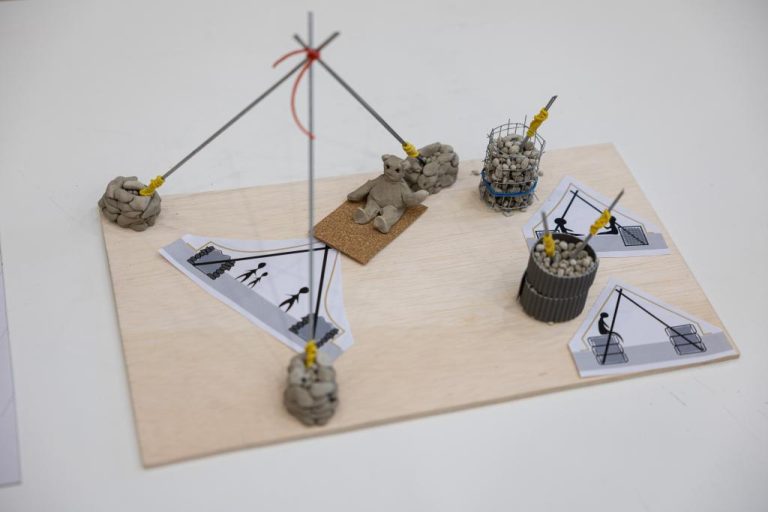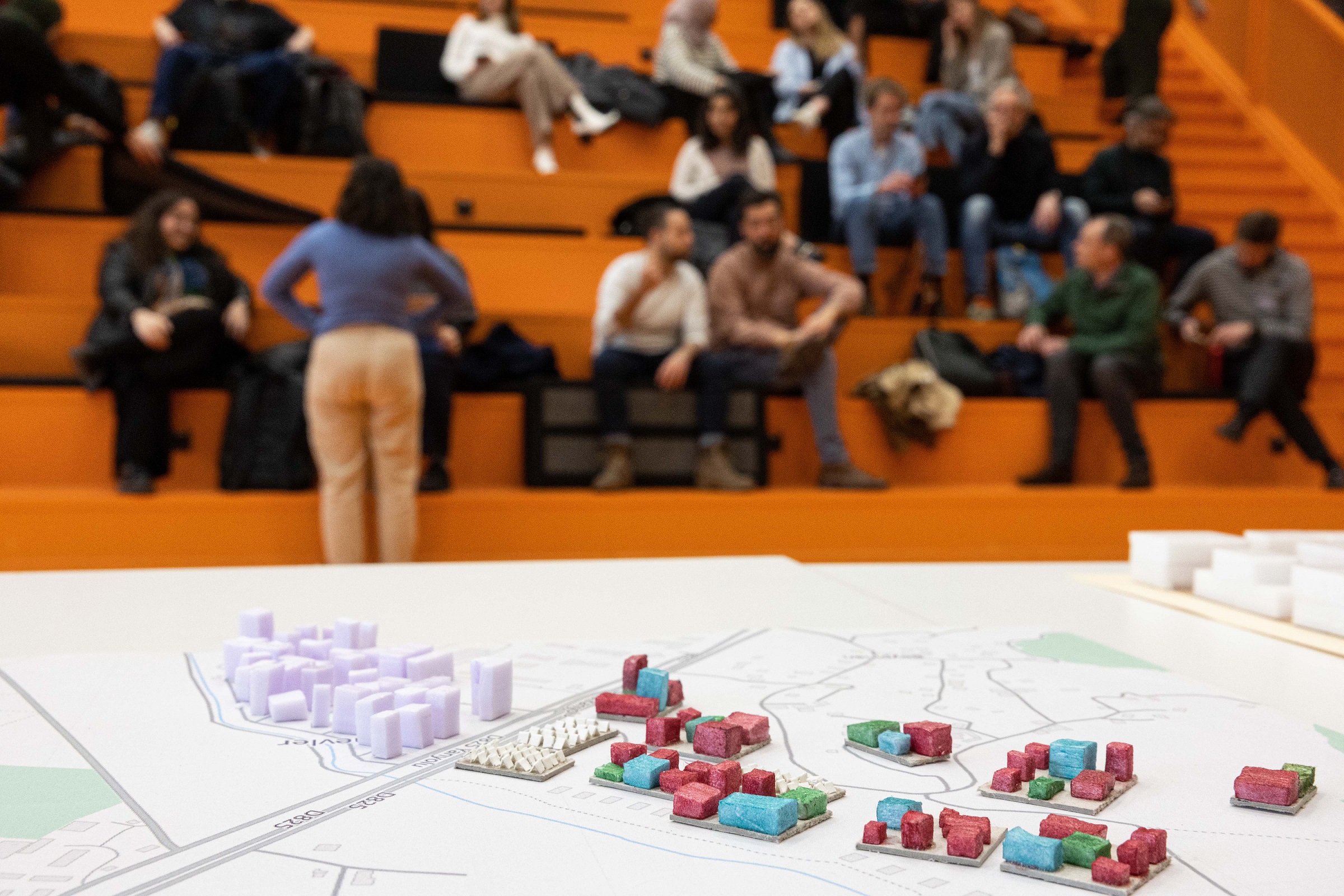On Friday 24 March students presented their designs for the construction of earthquake-proof emergency housing in Turkey and Syria’s earthquake hit area. Delta went to look.
Fifty students present their designs for the building of earthquake-proof emergency housing. (Photos: Marcel Bilow)
On Friday 24 March, a modest number of national and regional press reporters gathered in the Faculty of Architecture and the Built Environment’s model hall. They watched as students worked on a model of clay and wood, and made sketches on their computers. They were not just working on any ordinary module of their course, instead, 50 students from the Syrian Turkish Architectural Recovery Team (Start) were working on temporary shelters for victims of the earthquake in Turkey and Syria. One of the initiators, master’s student Meriç Kessaf, moves among the tables and talks to the press.
In a hoarse voice she shares her reason for setting up the project. “My parents come from Antakya, the capital city of the province of Hatay, which was badly hit. I wanted to do something for the people there. At first the plan was to collect money or warm blankets with fellow students, but we quickly realised that it would be better to use our knowledge.”
This led to a workshop week in which 50 students – outside their lectures – pored over the design of a house prototype that could resist new earthquakes or aftershocks, that the local population can build themselves from materials that are readily available, and that is easy to dismantle. They were divided into 10 groups of four to six students according to their ages and degree programmes. Every group works on a different part of the house.

One group thought about ways to use waste as building blocks and tested a few ideas.
The students did not do this alone. A construction advisor looked at the plans and experts gave talks about the impacts of natural disasters. “We talked to a psychologist from the United Nations about the impact on victims,” says Kessaf. “After all, a design is not only a technical process, psychology is just as important. We thought about how you can create confidence among the inhabitants to continue their lives after an event like this, and how you can make sure that your design helps the victims recover their self-esteem and feel safe again in their homes.”
Privacy
One of the groups is trying to do this by giving the inhabitants safety and privacy. “People need their own space so we designed T-shaped modular blocks,” says bachelor student Martin Lejewaan, cutting wooden sticks to size. “They can arrange them as they wish to close off their own space.”

Movable T-shaped walls give a degree of privacy.
As the houses will probably be used for a long time, the design has to withstand a possible next earthquake. With this in mind, another group is looking at the construction. To do so they are drawing on the traditional Turkish methods of construction for ideas. “We want to build wooden frames that we can fill with stone and mortar made from earth on location. This is an old method that seems to be more resistant to earthquake shocks than current building methods that use concrete blocks,” explains a student.
That said, the methodology is not the most important part of their design. “We want to work and build with the people who will actually be living in the houses. It is important for them to learn to trust their home. The building process will thus also help them process their trauma.” A civil engineering student joins the discussion. He has his reservation and passes a folder to the designers with examples of supporting structures that he believes would be better options.
Teacher and supervisor Job Schroën follows the discussion from a distance. He teaches Extreme Architecture in which students learn to design for locations in extreme conditions. This week he is closely involved in the Start initiative. “A can-do mentality dominates the work here. Students from different faculties work on different designs – on top of their course obligations – and teachers come here to help on their days off. Having shelter is a human right and all the people involved really want to be meaningful for the victims in Turkey and Syria.”
Prototype
The various groups will present their findings on Friday evening. The best ideas will be further developed in a 1:1 prototype of an earthquake-proof shelter that can be used in the affected area.
This closes the first phase of the initiative. Kessaf reflects on a week of extremes. Grateful for the enthusiasm of the participants, the reality of the situation also became painfully clear. “A care provider gave an account of the situation in Antakya, the city where my family members are currently living in tents. When she showed photos of the after effects of the earthquake, I realised that a lot of people will never again know the city as it used to be,” she says emotionally.
For her, this is even more motivating to ensure the project is successful. “We started with 10 students in a WhatsApp group and this has grown to 100. Our mail box is always full of requests. So even after this week we still have a lot of things to do.”
- Do you want to share your knowledge? Then contact the team by email or through LinkedIn.
- Do you want to make a financial contribution to the project? Donate through the online collection.
Do you have a question or comment about this article?
m.vanderveldt@tudelft.nl


Comments are closed.